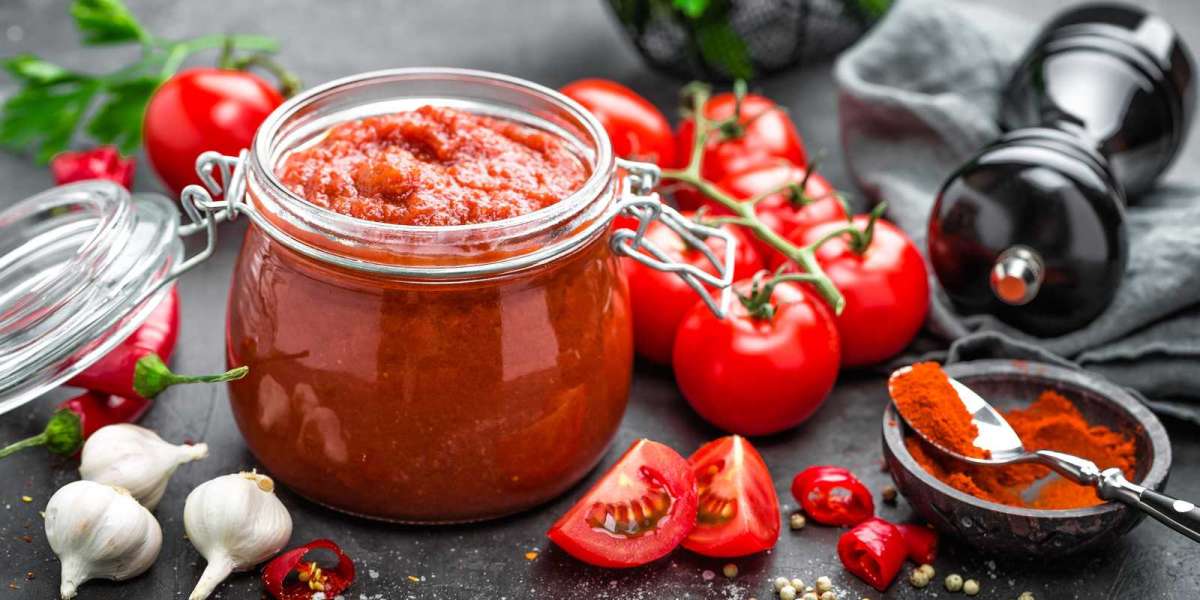Preparing tomato paste from tomatoes is one of the smartest ways to capture the essence of summer produce and keep it ready for soups, sauces, and hearty recipes year-round. Many home cooks don’t realize how simple it is to turn fresh tomatoes into a concentrated, intensely flavored paste that elevates everything it touches. Whether you’re aiming for better flavor, fewer preservatives, or cost savings, learning this technique is worth every minute.
Understanding What Tomato Paste Really Is
Tomato paste is essentially tomatoes that have been cooked down until most of the water evaporates, leaving behind a thick, rich, deep-red concentrate. This process intensifies natural sugars and acids, producing a balanced flavor that becomes the foundation for many dishes.
Why Homemade Paste Tastes Better
Commercial versions can be convenient, but they often include additives or are processed from varieties chosen for yield rather than taste. Making tomato paste from tomatoes grown locally, or from your own garden, results in a paste with a sweetness and depth unmatched by canned products.
Choosing the Best Tomatoes for Your Paste
Great paste begins with great tomatoes. While any tomato can work, some varieties produce better results than others.
Ideal Varieties
Roma, San Marzano, and Amish Paste are classic choices because they are meaty with fewer seeds and less water. Their rich flavor concentrates beautifully during cooking.
What to Avoid
Watery salad tomatoes like Beefsteak or slicing varieties contain more moisture, requiring longer cooking times. They still work, but the reduction process will take significantly longer.
Prepping Your Tomatoes for the Perfect Cookdown
Preparation is simple, but a few steps ensure a smoother paste later.
Washing and Trimming
Fresh tomatoes should be thoroughly rinsed to remove dirt or residue. Remove stems and trim away bruises or soft spots.
Peeling and Seeding
While some homemade methods skip peeling, taking a few extra minutes to remove skins creates a silkier final product. To do this quickly, score the bottoms, blanch for 30 seconds, and slip the skins off. Cut tomatoes in half and scoop out seeds. This step reduces bitterness and speeds up the thickening process.
Cooking Process for Deep, Concentrated Flavor
Making tomato paste from tomatoes involves gentle patience. You’re not just cooking—you’re coaxing out flavor.
First Simmer
Place chopped tomatoes in a heavy pot over medium heat. After 10–15 minutes, they begin to soften and release liquid. Stir occasionally to prevent sticking.
Pureeing for Smooth Texture
Once softened, pass the mixture through a food mill or use an immersion blender. A smooth puree cooks more evenly and gives your paste a consistent texture.
Slow Reduction
Return the puree to the pot and reduce heat to low. Now begins the slow transformation. Over 2 to 3 hours, your tomato mixture thickens, darkens, and becomes intensely aromatic. Stir every 10–15 minutes, increasing frequency as it thickens to avoid scorching. Some cooks prefer to transfer the puree to a sheet pan and let it reduce in the oven at low heat. This method helps maintain an even temperature and reduces risk of burning.
Enhancing Flavor with Simple Additions
Homemade tomato paste stands strong on its own, but subtle additions can elevate it further.
Salt
A small amount of salt enhances sweetness and extends shelf life. Salt should be added gradually, tasting as you go.
Olive Oil
A drizzle of olive oil enriches flavor and adds silkiness. It's optional but recommended.
Aromatics
Some people stir in a bay leaf, garlic clove, or basil during cooking, then remove before storing. These additions infuse delicate complexity without overpowering tomato flavor.
Knowing When the Paste Is Ready
Texture and color are your best cues. Fully reduced tomato paste becomes brick-red and thick enough that a spoon dragged across the bottom of the pot leaves a trail. It should feel dense, not watery, and hold shape when spooned.
Storing Your Homemade Tomato Paste
Once cooled, choosing the right storage method preserves the flavor you worked hard to create.
Refrigeration
Small jars work well for short-term storage. Pour a thin layer of olive oil on top to block air exposure and help prevent mold. Paste stored this way keeps for about a week.
Freezing
Freezing is ideal for long-term storage. Spoon the paste into ice cube trays, freeze until solid, then transfer cubes into airtight bags. Each cube typically equals one tablespoon—perfect for cooking.
Jar Canning
For those who prefer pantry storage, canning is an option, but safety guidelines must be followed strictly. Tomato paste is dense, so pressure canning is recommended rather than water-bath canning.
How to Use Your Homemade Tomato Paste
The uses for tomato paste from tomatoes are nearly endless, and having it on hand makes everyday cooking more flavorful.
In Soups and Stews
A small spoonful deepens broth and adds body to vegetable or meat-based soups.
For Sauces
Whether you're making marinara, pizza sauce, or curry, tomato paste adds richness and color.
As a Marinade Base
Mixed with spices, garlic, and oil, it becomes a robust coating for meats, tofu, or vegetables before roasting or grilling.
In Quick Weeknight Meals
Stir a little into sautéed onions when making chili, lentils, or pasta dishes. The boost in flavor is immediate and impressive.
Final Thoughts
Crafting tomato paste from tomatoes may seem like a slow, old-fashioned process, but the payoff is tremendous. You get a cleaner, fuller flavor that elevates any dish and offers a connection to timeless cooking traditions. Plus, the satisfaction of turning simple tomatoes into a powerful kitchen staple is hard to beat. With just patience and quality ingredients, you can stock your pantry or freezer with a homemade paste that outshines anything from the store.














